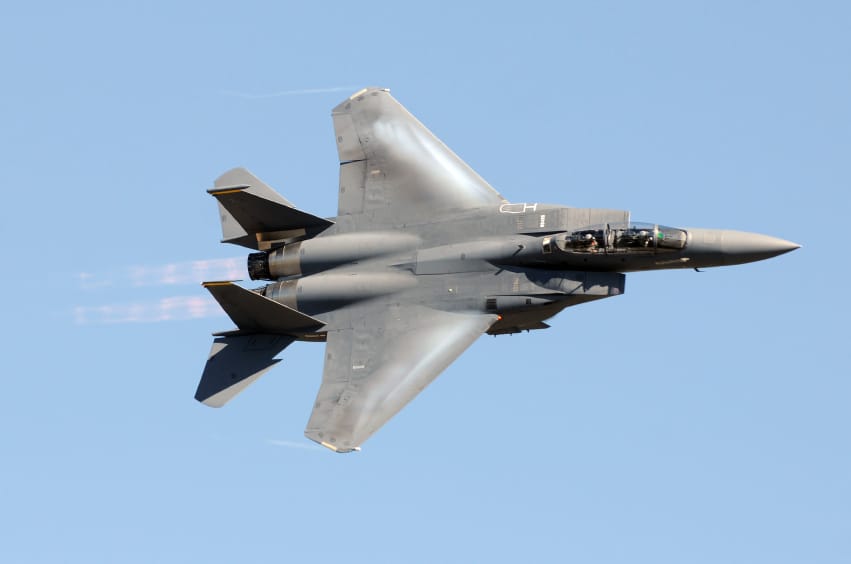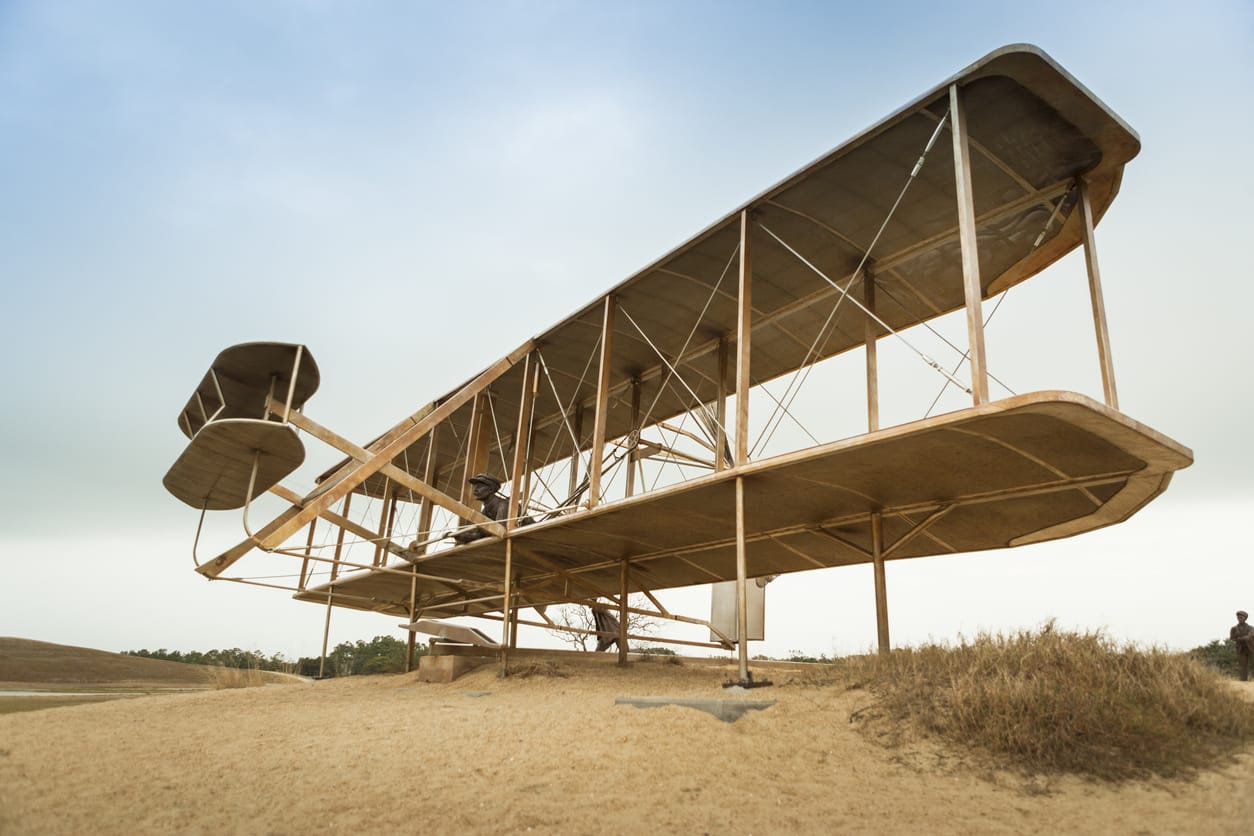In the first part of this series, we discussed the importance of the Wright Flyer, maintaining control over the surfaces of an aircraft, the use of airplanes as a weapon, the rise of monoplanes, and finally the technological leap of the first instrument flight in 1929. This brings us to the brink of the Second World War and the jet age, as well as the development of air power as an everyday form of transport.
These breakthroughs may be less well-known in the general public than the sensational moments discussed in Part I, but they are no less important. Making and keeping air travel safe, affordable, and reliable is what has brought us from aviation as a stunt to aviation as a facet of everyday life in the modern era.
Development of Radar and the Jet Engine
Although its properties were first demonstrated before the turn of the century, radar was first practically used in the 1930’s. Various developed nations tinkered with its use throughout the decade. Radar was available in the early days of WWII, but it wasn’t useful without a war mindset. While an attacking fleet of Japanese airplanes were detected by radar over Hawaii in 1941, they were thought to be a group of American B-17s. Once radar was deployed as a defense mechanism, it solidified itself as a necessity in the aviation world.
The era of World War II was the heyday of the piston airplane. The advent of the war pushed the refinement of non-jet propelled aircraft, but the concentration of material and manpower on producing reliable aircraft for bombing runs and dogfights prevented the research and development required for birthing the jet engine. Diversion of resources to develop nuclear weapons and maintain traditional ground campaigns slowed its arrival as well.
Jet engines existed before World War II, but mostly in laboratories. Both the Allies and the Axis powers were dedicating resources to developing them; Germany and England produced suitable jet engines, but neither were truly useful for airplanes or combat due to their massive fuel consumption. One German fighter, the Me 262, produced by Messerschmitt, was used in combat, but its inefficiency kept it out of the skies. The Royal Air Force developed the Gloster Meteor, but its straight wings and conventional design prevented it from posting speeds which were any faster than the highly developed piston airplanes then in use.
Breaking the Sound Barrier: Chuck Yeager, the Bell X-1 and the Concorde
The difficulty of designing an engine which could deliver high thrust without punishing fuel consumption was a puzzle engineers were finally free to turn to after the war was over. Once they cracked the code, initially by pairing a rotating compressor with a high-performance one, each attached to their own turbines, the jet engine and jet fighter developed rapidly.
The Bell X-1, named Glamorous Glennis by its pilot, Chuck Yeager, posted the accomplishment of flying faster than the speed of sound in 1947. The X-1, although experimental, signaled the arrival of the rocket engine. Engineers solved the problem of fuel consumption by launching the Bell X-1 from a Boeing B-29.
While it took time for supersonic jets to filter into commercial service, the Concorde debuted in 1973. Rolls Royce developed engines which provided enough power for takeoff and sustained faster-than-sound flight. A transatlantic crossing that normally took eight hours was slashed to three and a half. The Concorde connected North America, South America, and Europe for several decades until the early 2000s, when a terrorism-weakened economy, high operating expenses, and environmental concerns due to jet noise led to the collapse of the service, and the Concorde ceased operations in 2003.
Although the loss of the Concorde was initially a disappointing step back in the development of commercial aviation, it may prove to be only a pause. The decommissioned aircraft has been rescued by a special interest group, and the Concorde is hoped to return as a charter service in 2019.
Technological Advancements: Cabin Pressurization, Turbofan Engines, Composites, and Autopilot
Jet engines are more efficient at high altitudes, where lessened turbulence leads to increased passenger comfort. At the same time, cabin pressurization allows airplanes to fly at high altitudes without passengers and crew having to wear oxygen masks. Outside the aircraft, high-bypass turbofan engines are much more efficient and powerful than the early turbojet engines, allowing faster cruise speeds and longer range. Such material advances as carbon fiber have allowed faster speeds as well. Composite materials used in airframe construction are lighter, stronger, more durable, and won’t corrode like aluminum.
Autopilots have advanced from systems which simply held the flight controls in place, to rudimentary forms of holding altitude and heading, to the ability of fully maneuvering the aircraft, navigating a course when connected to the Flight Management System, and controlling the engines through autothrottles. At equipped airports, autoland (Category III instrument approaches) allows zero-visibility landings.
Automatic Dependent Surveillance Broadcast (ADS-B) and GPS
Advancements in space and satellite technology made for safer aviation as well. The Automatic Dependent Surveillance Broadcast (ADS-B) allowed for precise identification of aircraft on air traffic control (ATC) displays via satellite communication. This space-age development eliminated the need for four-digit transponders, which presented accuracy problems based on aircraft altitude and position of the radar receiver. ADS-B equipped transponders are mandated to be on all aircraft operating in controlled airspace starting January 1st, 2020.
GPS allows point-to-point navigation, in many cases direct from airport to airport, instead of flying from one radio navigation station to another. Most Non-Directional Beacon (NDB) stations have been de-commissioned and Very-high-frequency Omni-directional Range (VOR) stations are starting to be de-commissioned. Thanks to these advances, the majority of pilots now use iPads/tablets to carry their manuals and navigation charts instead of lugging around paper, a system which was difficult to keep current.
Most cockpit displays are now “glass” or computer screens which display all manner of navigation and engine information versus the “steam gauges” or “round dials,” analog instruments which could show only one piece of information.
Read More:
Ready to soar in your aviation career?
Mr. Matthew A. Johnston has over 23 years of experience serving various roles in education and is currently serving as the President of California Aeronautical University. He maintains memberships and is a supporting participant with several aviation promoting and advocacy associations including University Aviation Association (UAA), Regional Airline Association (RAA), AOPA, NBAA, and EAA with the Young Eagles program. He is proud of his collaboration with airlines, aviation businesses and individual aviation professionals who are working with him to develop California Aeronautical University as a leader in educating aviation professionals.


Very interesting information, where can I read part l .
Hi Jaime! You can find part I here: https://calaero.edu/breakthroughs-in-aviation-history-1/